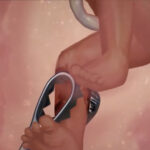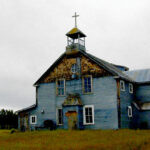Blog Post
Lila Rose: The Life of a Fighter
By Jonathon Van Maren
Fighting for Life: Becoming a Force for Change in a Wounded World, by Lila Rose (Thomas Nelson: 2021), 240 pages.
Lila Rose was 15 when she started the pro-life organization Live Action in her parents’ California home. She was an 18-year-old freshman at UCLA when she did her first major undercover investigation into the abortion industry; 19 when Live Action earned non-profit status; 21 when she gave her first Congressional briefing; and 22 when she raised her first million dollars. At 23, she hosted her first Congressional press conference. At 32, Rose runs one of America’s largest pro-life groups, a global digital leader in pro-life education boasting 1.3 billion video views. All of that is to say that her new book, Fighting for Life: Becoming a Force for Change in a Wounded World, is worth reading.
I’ve read most memoirs written by pro-life activists, and Rose’s book is unique. She shares her struggles with depression, eating disorders, self-harm, and suicidal ideation; reveals how difficult it was to date as a Millennial pro-life leader in the D.C. bubble; and discusses the unwanted romantic attention and even stalking that accompanied her growing national profile. She talks about the crises of mental illness endured by her family, her embarrassing mistakes as a leader struggling to adapt in Washington, D.C., and the difficulties of growing a staff and managing an organization as someone younger than many of those who worked for her. Fighting for Life is a fusion of genres: biography, motivational, and perhaps even a bit of self-help for aspiring activists.
When I asked Rose why she decided to share so much, she told me that some of her friends had asked her the same thing when they read the first draft, but that she wanted the book to be useful for people. She certainly accomplished that—and it is a fascinating story to boot.
Rose’s journey into the pro-life movement resembles that of many other leaders. As a child, she found a copy of Dr. and Mrs. J.C. Wilke’s 1971 Handbook on Abortion on her parents’ shelf and opened it. “I was staring at the photo of a tiny baby with tiny arms and legs severed from a tiny body.” She was stunned to discover the carnage was legal. She began hunting for more information and found a National Right to Life newsletter (her parents were subscribers) that included diagrams of a partial-birth abortion. The images broke her heart and spurred her to action. She volunteered with her grandmother at the local crisis pregnancy center; she prayed outside a San Jose abortion clinic; she fundraised for an ultrasound machine. At the age of 15, she started Live Action because there was no other pro-life group in the San Francisco Bay Area focusing on youth education.
READ THE REST OF THIS COLUMN AT THE AMERICAN CONSERVATIVE








